Deadlocked: A Sookie Stackhouse Novel
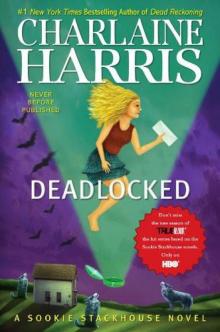

Author: Charlaine Harris
Category: Urban
Published: 2012
Series:
View: 656
Read OnlineIt’s vampire politics as usual around the town of Bon Temps, but never before have they hit so close to Sookie’s heart... Growing up with telepathic abilities, Sookie Stackhouse realized early on there were things she’d rather not know. And now that she’s an adult, she also realizes that some things she knows about, she’d rather not see—like Eric Northman feeding off another woman. A younger one. There’s a thing or two she’d like to say about that, but she has to keep quiet—Felipe de Castro, the Vampire King of Louisiana (and Arkansas and Nevada), is in town. It’s the worst possible time for a human body to show up in Eric’s front yard—especially the body of the woman whose blood he just drank. Now, it’s up to Sookie and Bill, the official Area Five investigator, to solve the murder. Sookie thinks that, at least this time, the dead girl’s fate has nothing to do with her. But she is wrong. She has an enemy, one far more devious than she would ever suspect, who’s set out to make Sookie’s world come crashing down.Amazon.com ReviewA conversation with Charlaine Harris, best-selling author of Deadlocked, and Laurell K. Hamilton, best-selling author of Kiss the DeadQuestion: Did you ever imagine that your series would run as long as it has?Charlaine Harris: I was just glad to sell the first book. It took two years of my agent sending it out to get a bite. I never even dreamed that Sookie would be so popular, that I would find so much to say about her and her world.Laurell K. Hamilton: No. I had over two hundred rejections for the first Anita Blake novel. They were the nicest rejections, with editors suggesting other publishing houses to send it to, but they, themselves, couldn't figure out how to market it. When I got that first three book contract, I remember thinking, "Well, at least I'll get to write three of them." I actually did think I had at least ten books in Anita and her world, but I don't think anyone can plan to write twenty-one novels in a series and still be excited about starting the twenty-second.Did you ever dream paranormal would be this hot?LKH: I remember being told that mixed genre didn't sell, before the term paranormal became a genre. I was also told that no one wanted to read about vampires. More than one editor told me that particular monster was dead and gone. I thought there was life left in the old legends, but I never saw this level of popularity coming. CH: Yes, even my agent didn't expect Dead Until Dark would be an easy sell, maybe especially since my books contained a lot of humor. Vampires were passé, and books that crossed genres (Except for yours: I think you had three or four books out when I wrote the first Sookie, and I was so glad to discover them!) were called "unshelvable.’ I could never have anticipated shelves and shelves of cross-genre books. Does fan response play a part in your planning process?CH: Not in the sense of changing plot direction in my novels. This is my story to tell, and I have to write it the way I see it. But every now and then when reader response to a character is unexpectedly enthusiastic--or the opposite--I'll take a second look at that character to see why he/she is coming across in a way I didn't expect or anticipate. LKH: I don't change plot direction for fan reaction either. My story, my world, my books, my stuff, my way. The only people who can change the direction of my novels are my characters. It's their life, after all, so if they're really insistent on a different plot, then they win. I agree that reader response to a character can make me puzzle over them more, but it doesn't usually change how often the character is on stage, or how big their role is, because weirdly if the fans are interested, then I'm already intrigued. Best example is Edward who started out as this cold blooded assassin, almost a bad guy, and now he's one of Anita's best friends, and he's a U. S. Marshal. So, not what I had planned for him. Have you ever had a character totally surprise you with their choices?LKH: A lot of my characters have minds of their own. Edward went away on his own and got himself engaged to a woman with two children from her first marriage. Edward-- assassin, ex-military, current police officer, taking a six-year-old to ballet lessons with all the other moms both amuses and hurts my head. Anita's love life went into a completely different direction than I'd ever anticipated. I so didn't see Anita dating this many men, or being in love with more than one man, and having everyone she loved okay with that. CH: I've discovered some surprising things about my characters as I wrote them. I know that their minds are really my mind, but sometimes it doesn't feel that way. It's like knowing a character has a secret (I'm thinking of Bill), and then suddenly realizing what that secret is. I was genuinely aghast. Sometimes my creative brain thinks a lot faster than my conscious brain. And it's certainly a lot more devious. How do you keep a world with paranormal elements credible?CH: I anchored my skewed world with real-life elements. Sookie has to pay her bills, she has to do her laundry, and she has family obligations. My vampires buy their clothes at the mall. My werewolf runs a surveying business. One of my fairies works in customer service at a department store. Readers seem to enjoy the fact that no matter what creature you may be, there's a process of surviving that has to be gone through; but there's all these other elements that make that process so different. LKH: I make sure any real life facts are as real and well-researched as possible. Because I'm asking people to believe in vampires, wereanimals, and zombies, I need to make sure the guns, cars, and real crime are as realistic as possible. Once a reader catches me wrong in an area where they are expert they won't believe my monsters are real. But I have found if I'm right on the hard facts even experts will let me fudge, or take that next fantastic leap, because I've proven myself by laying the foundation of reality to make my leap into the unknown. Do people ever expect you to be your characters?LKH: If I had known people would get confused between fiction and fact I'd have made Anita look less like me, but it just never occurred to me that there would be a problem. I've had fans want to know what weapons I'm carrying. They assume all the men are based on real people, and they aren't. I don't actually base characters on real people. Since I can't lighten Anita's hair, I've lightened my own and I get less fan confusion. I've had fans ask for the phone numbers of the men and get angry when I tried to explain I couldn't give them the contact info for a fictional character. CH: Ha! Well, I'm much older and rounder than Sookie, so I'm definitely no stand-in for Sookie. In fact, readers who have never met me before are usually astonished when they meet me; so were the actors on True Blood. Some of my readers who came to me after watching True Blood get the characters in the books sort of conflated with the actors who play them on television. In their minds, Alexander Skarsgard IS Eric, Stephen Moyer IS Bill. It can lead to some confusing questions when I'm at signings. What scenes in your novels are the most fun for you to write? Action? Sex? Relationship drama?CH: All of those are fun, depending on the outcome! But I have to say, I love to write a good fight scene. I find the "relationship" scenes a challenge. When people talk about their relationships, it's a messy conversation. People aren't too articulate about their innermost feelings. And such conversations don't proceed in a linear way, but jag back and forth as each speaker voices the issues that are most important to that person. So it's hard to make sound realistic, coherent, and yet condense such a conversation enough to make it tolerable. LKH: It depends on my mood. Sometimes a good fight scene can be very therapeutic, and give a productive outlet for negative emotions. The more people involved in the action the more complex the fight choreography can become, and that can be a challenge, and slow down the emotional content for me. I enjoy doing sex scenes, but they are a different kind of challenge. On a day when I can get in the mood for the scene, they’re great, but on a day when real life interferes, it’s a bit like real sex. It’s hard to concentrate on it when you have too many interruptions from the non-sexy side of your life. I guess that’s true of all writing, though, too many interruptions disrupt the process in general. The biggest challenge for the sex scenes is that sex is a very personal and individual activity, so I have the same girl involved, but different men and I want each man’s style to be unique. Relationship drama? Yuck, can I just say, yuck again? This kind of drama isn’t fun in real life and the only thing that makes fictional relationship drama tolerable is that it’s fictional, and I’m not having to endure it in my real life, but other than that it sucks just as much. It also tends to complicate my life as a writer, because almost nothing screws up a story arc like relationship choices, though I have had action scenes go so differently from what I’d planned that an entire third of a book had to be thrown out. It was a better book for it, but still, near deadline that was hard. What’s the hardest thing about writing such a long running series?LKH: The beginning of the book is easy, because you always want that to be interesting and lure in both old and new readers. It’s the middle of the book that becomes more complicated. As a writer you always have to think that you may have brand new readers picking up your book, so you have to explain the characters, the world, everything, but you don’t want to over explain to the long time readers. The other problem with a series is that each book needs to stand alone as much as possible, but you also want character growth and world development from novel to novel, so again, it’s a balancing act. I make sure that each opening is different enough that you won’t be left wondering, did I read that already. It’s an issue I’ve had with other series that I read. It gets very challenging when you get in double digits to make everything fresh, but familiar. I’m lucky that I’m still discovering new things about Anita, Jean-Claude, Edward, Nathaniel, everyone, and the world continues to grow and surprise me. My fictional world is like the real one, I never know quite what’s coming next. CH: The hardest thing is keeping track of previous developments and details. My memory just wasn't up to it, and I had to hire someone (the fabulous Victoria Koski). When you create a world, there are a thousand small things that make it credible, and it's easier than you'd think to forget whether someone is a werefox or a werelynx, or whether it's still daytime during the narrative or if you've passed into darkness. I think it's important to catch as many little errors as you can, so readers don't get yanked out of the world. I'm not the kind of reader who notices, but there are many readers who do.Photo Laurell K. Hamilton © Stefan HesterPhoto Charlaine Harris © Sigrid EstradaReview“Harris is a master at taking several paranormal worlds and plunging them into our reality with humor.” *Tulsa World“The Sookie Stackhouse series seamlessly mixes sensuality, violence and humor as readers experience the people of small-town Louisiana through Sookie’s eyes.” Boulder Weekly*
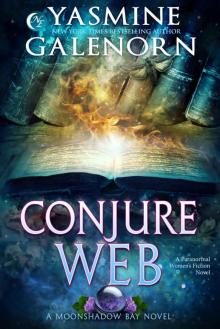 Conjure Web: A Moonshadow Bay Novel, Book 3
Conjure Web: A Moonshadow Bay Novel, Book 3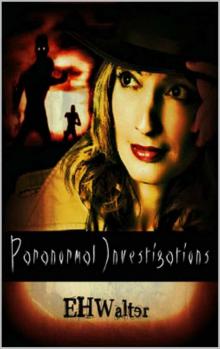 Paranormal Investigations: No Situation Too Strange
Paranormal Investigations: No Situation Too Strange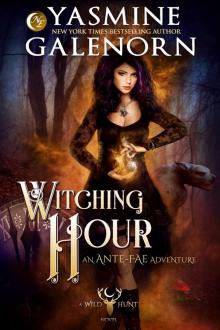 Witching Hour: A Wild Hunt Novel, Book 7
Witching Hour: A Wild Hunt Novel, Book 7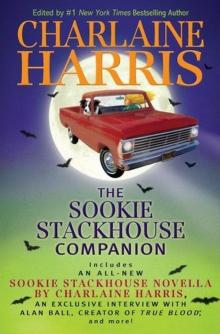 The Sookie Stackhouse Companion
The Sookie Stackhouse Companion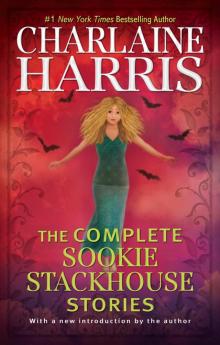 The Complete Sookie Stackhouse Stories (Sookie Stackhouse/True Blood)
The Complete Sookie Stackhouse Stories (Sookie Stackhouse/True Blood)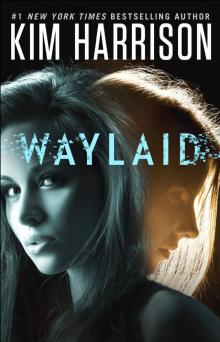 Waylaid
Waylaid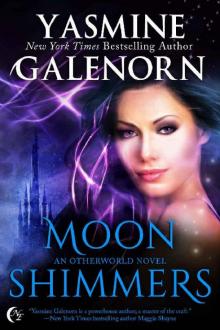 Moon Shimmers
Moon Shimmers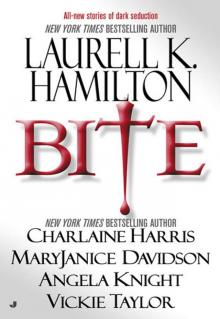 Bite
Bite